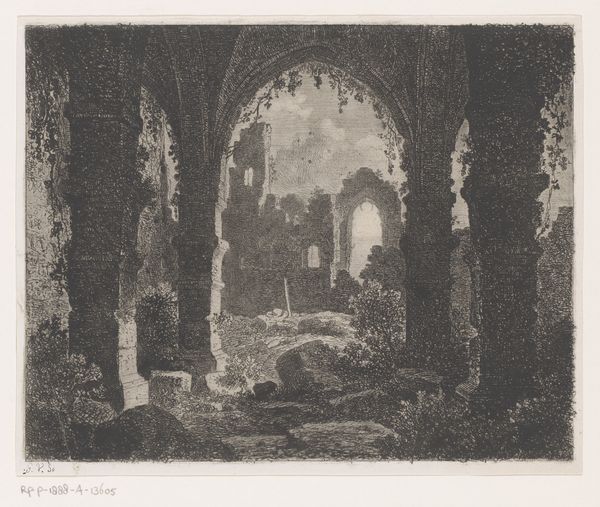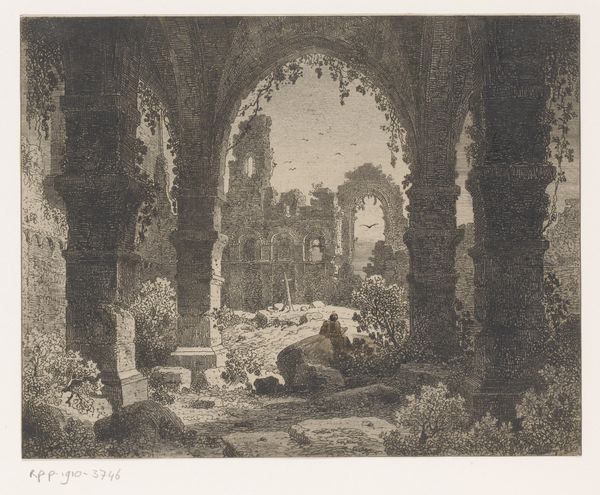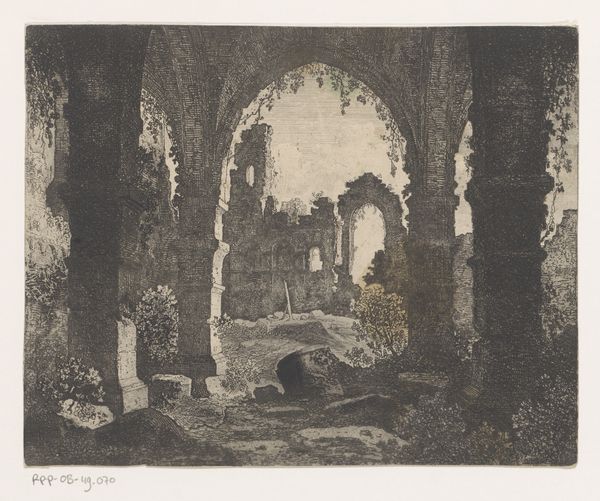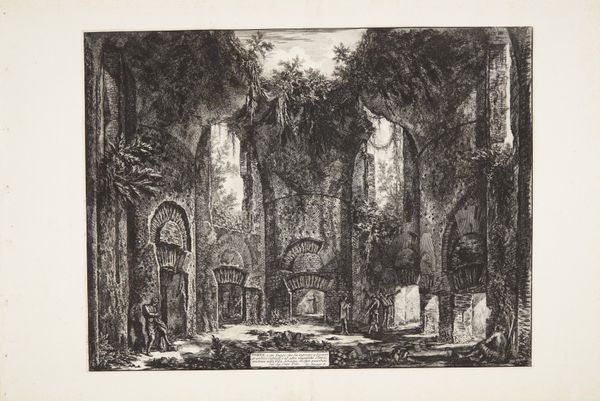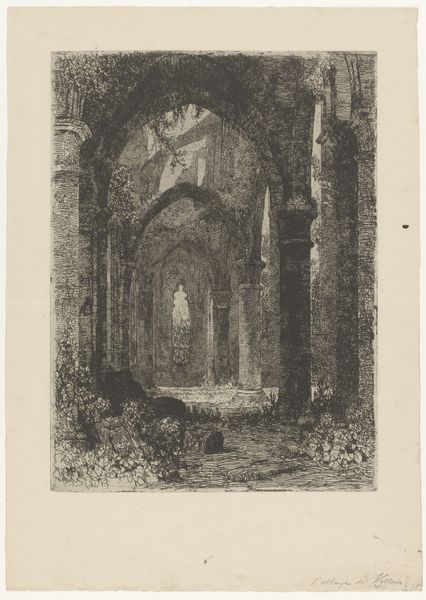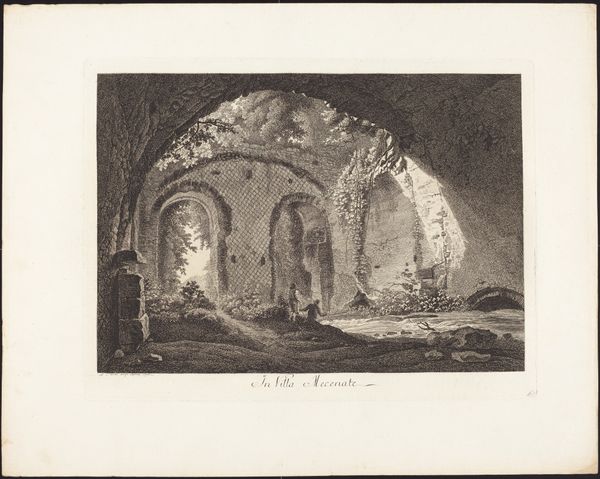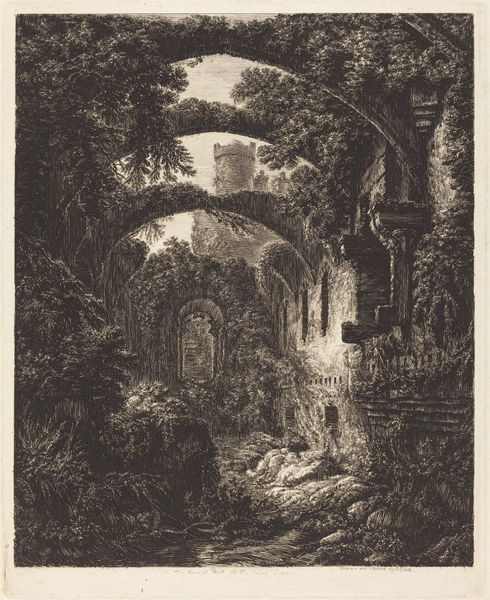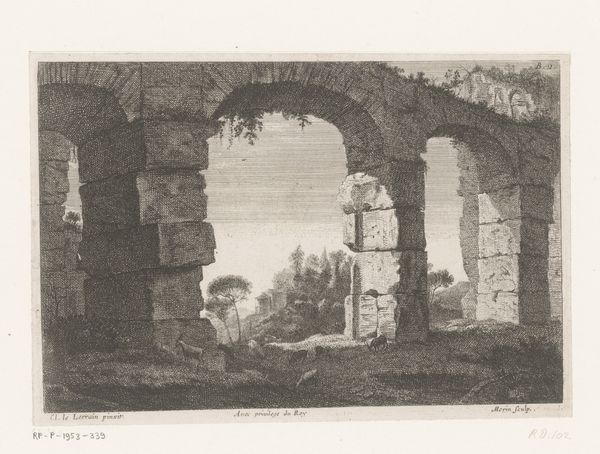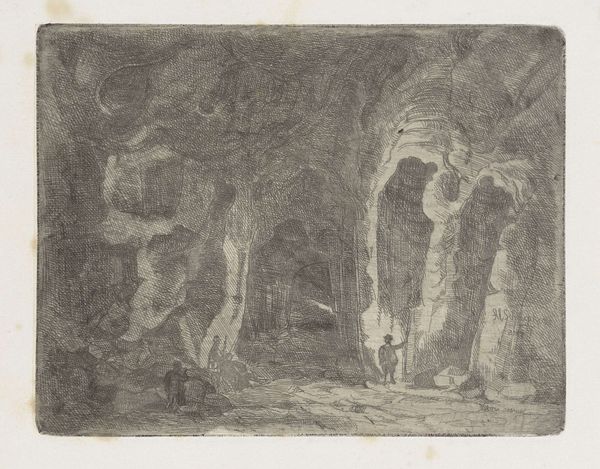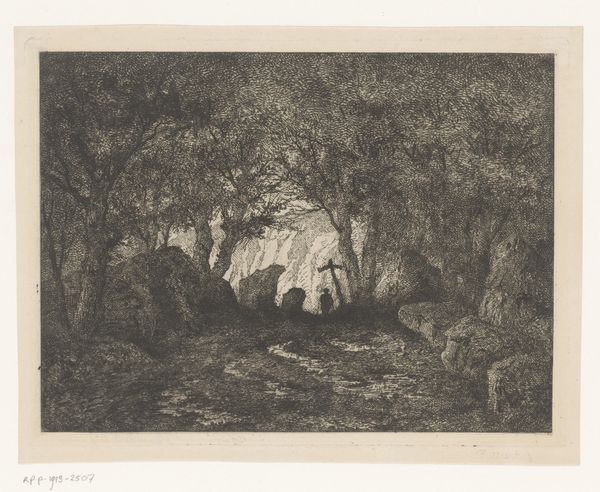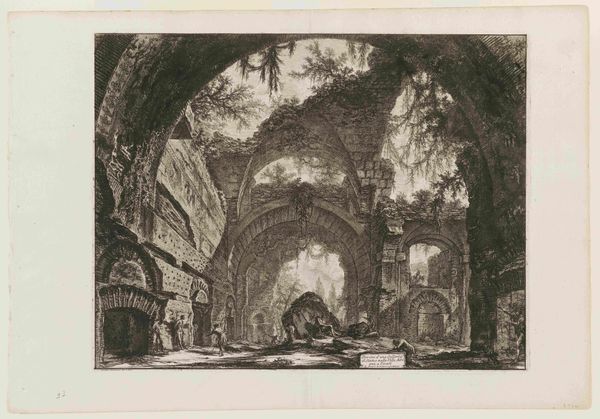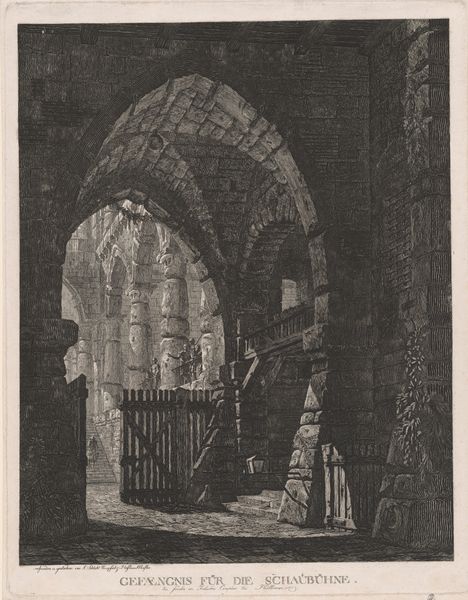
Dimensions: height 160 mm, width 200 mm
Copyright: Rijks Museum: Open Domain
Editor: This is *Gezicht op de ruïne van kasteel Kenilworth* by Guillaume Van der Hecht, an etching made sometime between 1827 and 1879. It depicts the interior of what looks like a ruined castle. It's incredibly atmospheric, almost haunting, with the stark contrast between light and shadow. What kind of narrative do you think this piece is trying to construct? Curator: It's interesting to think about what the ruin represents, isn’t it? Van der Hecht presents us with the remains of Kenilworth Castle. How can we see the socio-political dimensions of this type of imagery? Editor: You mean beyond just a pretty picture of old ruins? Curator: Exactly. Consider that these images were made in a period marked by intense social and political upheaval. What does the focus on ruins signify in that context? Is it merely nostalgia, or is there a commentary on power, on the fleeting nature of authority, perhaps even on the violence inherent in maintaining these structures? Editor: So, the ruin becomes a symbol? A symbol of lost power and the crumbling foundations of society. Maybe a commentary on colonialism and its impact on global landscapes? Curator: Precisely. These decaying castles can stand as stark reminders of the past’s injustices, prompting us to question the narratives we inherit and the systems that uphold them. What do we, today, leave to ruin? Editor: Wow, I never would have looked at it that way. It makes you think about what "progress" really means, and what gets sacrificed in the process. Thanks for shedding light on that. Curator: Absolutely. Art gives us opportunities to view our present through the ruins of the past. I appreciate your reflections!
Comments
No comments
Be the first to comment and join the conversation on the ultimate creative platform.
